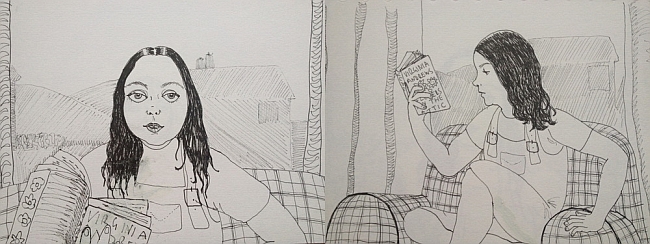 Today I’m continuing my discussion with Myriad First Graphic Novel Competition Finalist Wallis Eates about her comics work, with a particular focus on her graphic memoir Mumoirs. The first part of this major interview appeared yesterday on Broken Frontier. If you missed it then click here to read Wallis’s thoughts on the comics that inspired her as a child, how her art practice fed into her later comics work, and the themes of her work-in-progress…
Today I’m continuing my discussion with Myriad First Graphic Novel Competition Finalist Wallis Eates about her comics work, with a particular focus on her graphic memoir Mumoirs. The first part of this major interview appeared yesterday on Broken Frontier. If you missed it then click here to read Wallis’s thoughts on the comics that inspired her as a child, how her art practice fed into her later comics work, and the themes of her work-in-progress…
Mumoirs looks back on Wallis’s often strained relationship with her mother from her childhood days to later life. The project was one of the final six shortlisted graphic novels for the aforementioned prestigious Myriad First Graphic Novel Competition in 2014. Wallis has also contributed to anthologies like Steak Night #3 (reviewed here in this column) and self-published a series of zines called Fleeting Faces that tie into the greater overarching Mumoirs narrative (also reviewed here at BF).
In the concluding part of my chat with this unique practitioner in the graphic memoir field, we talk about the ethical concerns inherent in autobiographical comics, the layered relationship between truth and memory in the genre, and just what’s coming up next from Wallis Eates…
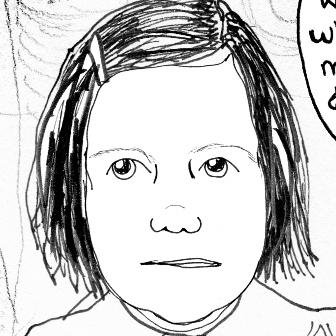 ANDY OLIVER: Your approach to autobiographical comics can be darkly comedic at times but it also has a very raw undercurrent to it, especially in the exploration of the more fractious moments in your relationship with your mother in Mumoirs. Given the quite vivid and uncompromising character portraits you create of real people do you ever have reservations about bringing their lives to the comics page?
ANDY OLIVER: Your approach to autobiographical comics can be darkly comedic at times but it also has a very raw undercurrent to it, especially in the exploration of the more fractious moments in your relationship with your mother in Mumoirs. Given the quite vivid and uncompromising character portraits you create of real people do you ever have reservations about bringing their lives to the comics page?
WALLIS EATES: All the time, it’s an ethical minefield and it can play havoc with my creativity. At the same time, it informs my approach in interesting ways that I might otherwise not have found that I will discuss later in relation to “truth” – it keeps me on my toes! In terms of all these actual people that appear in my work, it is of utmost importance to me that I come from a place of compassion and understanding, I really don’t see any point in being any other way. Everyone I have ever portrayed and will portray is or was a complex being, with reasons for what they did or do.
To engage the reader in this complexity is at the very heart of why I do this work. If some of these characters chose to do some questionable things, I have no problems with showing them as long as I can offer some balance to prevent their portrayal as a two-dimensional villain. Similarly, it is just as imperative to portray the uniqueness of somebody who may at some point have been a victim. I really hate mainstream media for doing the exact opposite. Hate it. I’m fighting it in my own small way, I am!
A related question about the presentation of autobiographical comics now. Do you feel it’s essential to capture the strict actuality of events or is a version of them – re-jigged to create a stronger narrative on the page – acceptable as long as it contains the emotional truth of what happened?
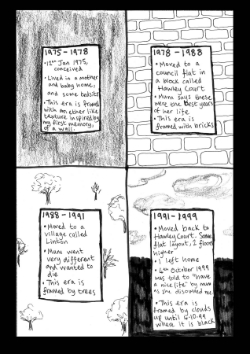 Any interpretation of an event is re-jiggery – in terms of visual storytelling, composition, angles, close-ups, what’s left in and what’s left out, are all choices, and nothing to do with how we experience the world – they are emotional projections into space! But can an emotion be remembered without being felt? If so, is that reliable? And if not, if it is being felt, is it necessarily the same one that that’s been felt before, or is it informed by experiences that have happened since? I suspect the latter, and I don’t suppose that’s all that’s going on either.
Any interpretation of an event is re-jiggery – in terms of visual storytelling, composition, angles, close-ups, what’s left in and what’s left out, are all choices, and nothing to do with how we experience the world – they are emotional projections into space! But can an emotion be remembered without being felt? If so, is that reliable? And if not, if it is being felt, is it necessarily the same one that that’s been felt before, or is it informed by experiences that have happened since? I suspect the latter, and I don’t suppose that’s all that’s going on either.
As such, I feel to answer this question I need to break it down to one part visual, and one part text. Visually, I allow for discrepancies. For example, the kitchen in the block of flats I grew up in crops up time and time again (kitchen is symbolic of womb which is very apt for Part 1, as this is very much a gestation period). However, every time I draw it, I do so from the same angle but entirely from memory and I won’t refer to previous depictions. This means it will have different dimensions at times, and other times things will be missing that were there before, or a pattern is slightly different.
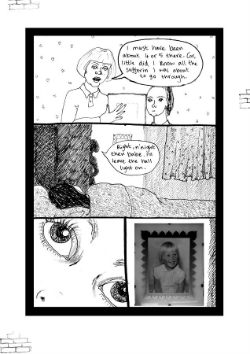 The reason for this is that I do not want to present to the reader the idea that they are engaging with an actual universe – this is my mind, these are my memories, they can be fallible. It might also mean that how I am currently feeling at the time of drawing may have an influence, and if that feeling is connected to the emotion relative to the scene, then maybe we might get some emotional truth.
The reason for this is that I do not want to present to the reader the idea that they are engaging with an actual universe – this is my mind, these are my memories, they can be fallible. It might also mean that how I am currently feeling at the time of drawing may have an influence, and if that feeling is connected to the emotion relative to the scene, then maybe we might get some emotional truth.
In terms of the writing, it’s all about hitting the right tone. I refuse to describe emotion retrospectively, for example ‘then I felt really shit’, or whatever – that would be really icky, boring and arguable. I don’t mind writing remembered thoughts, which can of course suggest an emotion, but the rest of the writing is the describing of actions. I think it is using language in this way that makes some of what is being portrayed darkly comedic, as you described it – it has that bluntness that we associate with children, aptly enough. So that way, I like to think that the voice of my narrator is on some level being emotionally truthful, and that using the visuals and the text in this way allows enough space for the reader to draw their own conclusions.
There’s a theme that runs through a lot of your work of spotlighting the smaller, isolated and seemingly inconsequential moments of life that, nevertheless, make up a large sum of who we are. Is that as important to you to explore as the bigger, seemingly more formative personal milestones?
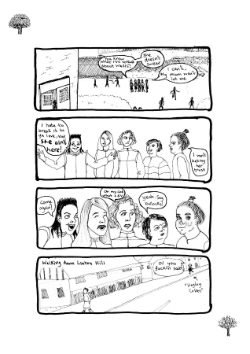 Absolutely! Personal narrative is a construct of experience, and is generally made up of the more formative milestones. However, I have a freakishly good memory and it has somehow come to pass that I am totally in love with these little standalone events that don’t seem to contribute to our grand narratives. I’d even go so far so as to say that I’ve anthropomorphised them into little germs going about their business so that we can have our stories, just like the germs in our bodies.
Absolutely! Personal narrative is a construct of experience, and is generally made up of the more formative milestones. However, I have a freakishly good memory and it has somehow come to pass that I am totally in love with these little standalone events that don’t seem to contribute to our grand narratives. I’d even go so far so as to say that I’ve anthropomorphised them into little germs going about their business so that we can have our stories, just like the germs in our bodies.
Like germs, each one may seem tiny and insignificant, but put them all together and you have a unique, living giant. I think what I love about them is how, in their lack of drama, they capture the essence of benign life, and it is important to remember that that is really the bulk of what is. Again, my small one-woman fight against the mass media for always tilting the balance into dystopia – wake up and smell the frothy!
Can you give us some insights into the distinctive visual storytelling choices you’ve made with Mumoirs in terms of framing devices and the juxtaposition of comic strip memories and actual childhood artefacts (see pages above for examples)?
I’m very lucky in that I have so many drawing pads from when I was growing up, and I think it would be utterly perverse not to use them in the graphic memoir – especially the drawings of my mum! And there’s one thinly veiled comic story of a girl and her mother not getting on, really funny. Even more surprising and equally as fortuitous are a handful of comic strips that my mum made of her own childhood! All of this adds another layer, rather like an archivist would team source material with oral history (see examples below).
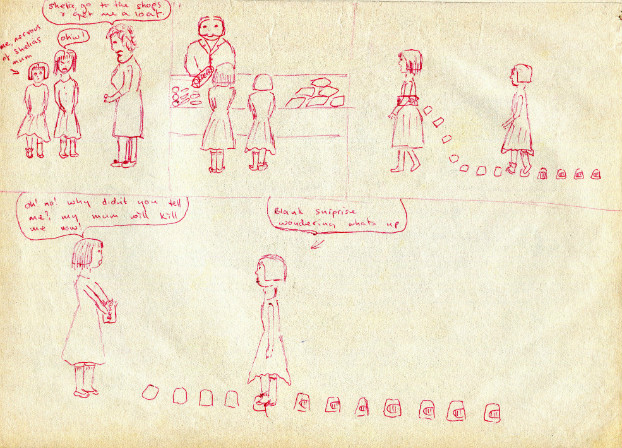 One example of using this source material depicts me on the floor doing some drawing, while my mum and my Uncle are having a chat about how much they hate people. The reader sees my drawing – it’s an actual drawing from the past, and it’s a page full of people (this happened, but I can’t remember if it was one of my people pages specifically that I was drawing at the time, although it is very likely). In addition to this, my answer for your first question will be given a narrative in Mumoirs, and similarly, there will be a section where my mum is teaching me how to draw. I like that these two acts of her mothering, not to mention the creation of me, are present and inextricably linked to the book itself – it symbolises our connection and is quite deliciously trippy!
One example of using this source material depicts me on the floor doing some drawing, while my mum and my Uncle are having a chat about how much they hate people. The reader sees my drawing – it’s an actual drawing from the past, and it’s a page full of people (this happened, but I can’t remember if it was one of my people pages specifically that I was drawing at the time, although it is very likely). In addition to this, my answer for your first question will be given a narrative in Mumoirs, and similarly, there will be a section where my mum is teaching me how to draw. I like that these two acts of her mothering, not to mention the creation of me, are present and inextricably linked to the book itself – it symbolises our connection and is quite deliciously trippy!
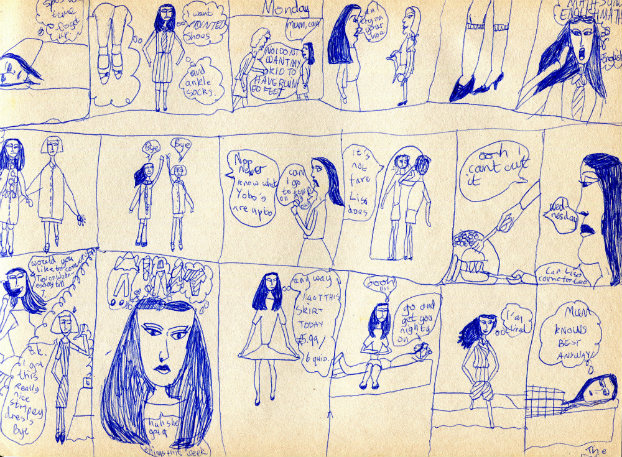 I literally use framing devices like frames around the page, to indicate to the reader when an event happened. The first part of the book uses bricks, as these pertain to the rigidity and Rapunzel-like existence of those early years in the block of flats, while the second part uses trees because this is when we moved to the country and everything became a bit more unwieldy, but nevertheless with the potential to grow. When, in Part 1, my mum demonstrates some of her future behaviour that will happen in Part 2, there are trees present to foretell what’s to come!
I literally use framing devices like frames around the page, to indicate to the reader when an event happened. The first part of the book uses bricks, as these pertain to the rigidity and Rapunzel-like existence of those early years in the block of flats, while the second part uses trees because this is when we moved to the country and everything became a bit more unwieldy, but nevertheless with the potential to grow. When, in Part 1, my mum demonstrates some of her future behaviour that will happen in Part 2, there are trees present to foretell what’s to come!
Originally, I used these frames to avoid telling the story chronologically, as we don’t remember in this way and I wanted to depict a stream-of-consciousness instead, knitting together themes. The frames, with a key telling the reader what years they covered, would at least offer some aid of making sense of what happened when. Since then, I have decided to break the book up into parts that are in order, but nevertheless each contain various streams of consciousness.
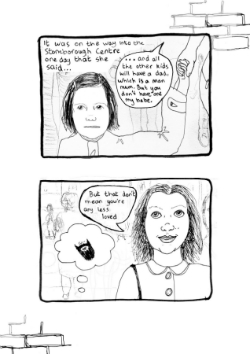 Is writing a book like Mumoirs a cathartic experience or, given that you’re revisiting memories that may be uncomfortable ones, is it the exact opposite?
Is writing a book like Mumoirs a cathartic experience or, given that you’re revisiting memories that may be uncomfortable ones, is it the exact opposite?
You know I said earlier about this book symbolising my own rites of passage (albeit a nigh on middle-aged one!)? Well, to be honest, I did start Mumoirs, just on a Tumblr, because I needed to get stuff off my chest. I started it in 2012 during therapy. When you go to therapy, they ask you what you want to achieve out of it, and I said I wanted to ‘be in the world’. I knew I had all these things I could do, but I was stuck doing lots of things I didn’t like.
The theme of incarceration that I mentioned earlier seemed to be following me around like a bad smell; I knew it was rooted in past experience, but that it was also self-imposed and that I had to find a toolkit to dismantle the invisible barriers that I constructed around myself. By starting Mumoirs, I was not only externalising and therefore making claim of my experiences, I was doing it as an artist which was the thing I wasn’t allowing myself to be, in public anyway. It seemed that I had to tackle the very subject that was stopping me, for the stopping to stop. What was interesting, was that it didn’t take long for the anger to go away, and for my default point of view, namely the ‘not being naughty’ mantra of childhood, to return – only by now it was constructive as opposed to self-restrictive. So yes, in a sense it is cathartic in that it allows for transformation.
The Myriad First Graphic Novel Competition judges on stage on the big night. From left to right – Woodrow Phoenix, Corinne Pearlman, Nicola Streeten, Meg Rosoff and Andy Oliver
Last year you were shortlisted for the Myriad First Graphic Novel Competition. Was that a boost for your confidence going forward with Mumoirs?
So much! It was as if the request I’d made from therapy had delivered – I now felt I was ‘in the world’. And it’s not just Mumoirs I’ve continued with, I’ve since jacked in the 9-5 and am involved in all sorts of projects that I will outline later. Of course it’s risky, but I no longer feel all trapped like I did – I feel like I can be creative with my actual life now, as opposed to being creative in secret and getting all upset. It also resulted in my becoming engaged in the comics community, which I didn’t know existed before, because of this bloody bubble I lived in.
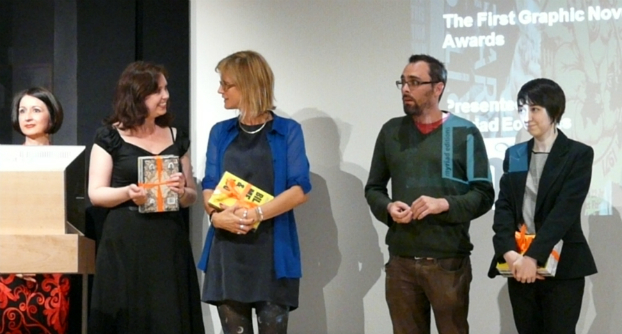
Wallis (second left) with, left to right, fellow Myriad First Graphic Novel Competition finalists Jessica Martin and Henny Beaumont, ‘The Black Project’ author Gareth Brookes, and competition winner Jade Sarson
Then, because of the Myriad competition that you were a judge on, you and I became friends on Facebook and you’d post up what comic events were on, and I’d go! And I’m so happy I did, because the comics bunch are just the best – and I’m way more exposed to all the brilliant work that’s being created too. I’d just like to add that my good friends and comics creators Nick Abadzis and Rachael Ball were really instrumental in boosting my confidence enough to even enter the Myriad competition in the first place; as was Laydeez Do Comics who very kindly let me talk about the project and my work at one of their nights (I knew about Laydeez through Rachael, and I knew Rachael through Nick, who I just happened to have been friends with for over 20-odd years).
You’ve had illustrated prose work published in anthology Steak Night and also in your self-published zine series Fleeting Faces, both of which feed in to the greater Mumoirs narrative. What does prose offer in getting your reflections across that comics don’t and vice versa?
I think I use prose to punch, and comics to pull. A punch is more definitive, I’m saying, ‘Here, take this – it’s an experience,’ while with comics, I’m saying, ‘Here, look at this – what do you think?’ Why I would use to choose one and not the other is more difficult to say…in fact, I think it may well be tied in with pre and post therapy. While I was still cross and feeling lacking in voice, I wrote. Now, I’m all about the comics. Not to say I won’t return to prose, there are plenty more Fleeting Faces to do.
‘DeLorean the Backward Step-Cousin’ and ‘Dead Dave’ – two of the subjects of the Fleeting Faces zines
A recent exciting development is that you’re about to become the artist in residence at the Quadrant Arcade in Romford where you will be producing a comic about its shopkeepers and customers. How did that opportunity come about and what else does your role there entail?
I simply answered in ad in Arts Jobs – I’m so excited about this! The role is very much to engage the community in the arts, and to rejuvenate the reputation of Romford. I thought a really good way to do this would be to value the voices of those who live there. By giving the locals a platform to tell their stories, a far more intimate portrayal would be captured, revealing a far more interesting and complex reality than a reputation or stereotype could ever have.
I’ll be interviewing shopkeepers and residents, as well as running workshops and creating the comic in public! I’ll be wearing my headphones and generally being all animated and into it, as I am when I work – dancing in my chair and picking my hair and screeching and stuff. The residency will culminate in an event at the end of May, which, if all goes according to plan, will involve the launch of the comic book.
“1982: Summer holiday at school, mum was the cleaner. Alone in an attic with dust in the sun, piles of old books, children of the past, stories.”
For those interested in checking out your work further, will you be exhibiting at any small press shows or festivals this year?
Yes, my first ever foray into the world of festivals will happen this year at DIY Cultures where I’ll be sharing a table with friend and fellow artist, Keara Stewart, and we’ll be next to the wonderful Elizabeth Querstret. We’ve all got different coloured hair like witches so we’re putting some spells and smells together so that everyone will buy our stuff. We’ve also applied for a table at Alternative Press, so we’re boiling up some newts and concentrating really hard with our eyebrows to get that too.
And what can we expect to see from Wallis Eates in the near future? Are there any developments regarding Mumoirs’ future publication? Any other planned projects you would like to share?
In addition to the residency in Romford, I also put in a pitch to a brilliant organisation called Artreach, and I was one of 6 artists selected to lead on a community project. Mine is in collaboration between a school in Eltham and an initiative called ‘A Thousand Schools for A Thousand Girls’, whereby funds are raised in schools across the world to give an education to girls who live in commonwealth countries who otherwise would not be able to afford it.
My aim is to procure stories from a selection of girls who have already benefited from this scheme, and for the girls in the Eltham school to then depict these stories in comic form. This not only provides a voice for the individuals sharing their stories, but it raises awareness of the scheme and sends out a positive message. It also provides me with the opportunity to develop a model of working that I really want to explore, namely how drawing the experiences of others can promote empathy.
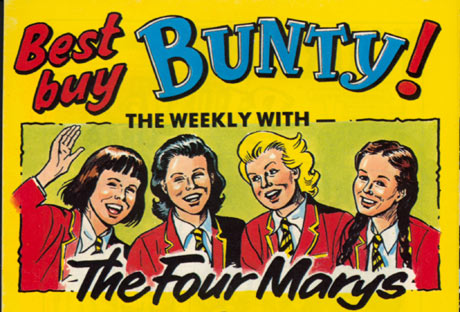 Going forward, I’d love to apply this to get the many unheard voices out there not only heard, but felt. I’d like to work in prisons, hospitals, homeless shelters or anywhere where there are stories on mute. I recently trained as a volunteer as part of an oral history project so that I can learn some informal interviewing techniques for this purpose. As such, I’m now going to copy what Danny Noble did in her interview with you and shout out to Ziggy’s Wish and Dr. Nina Burrows…if there’s anything I can do, I’m here…
Going forward, I’d love to apply this to get the many unheard voices out there not only heard, but felt. I’d like to work in prisons, hospitals, homeless shelters or anywhere where there are stories on mute. I recently trained as a volunteer as part of an oral history project so that I can learn some informal interviewing techniques for this purpose. As such, I’m now going to copy what Danny Noble did in her interview with you and shout out to Ziggy’s Wish and Dr. Nina Burrows…if there’s anything I can do, I’m here…
You’ll be seeing more of my work in print in the next Steak Night anthology (#4) by Records Records Records, a teeny page in the Sleater-Kinney anthology by One Beat Zines, and my mum’s gaping face in Keara Stewart’s nightmares anthology.
Also, in production at the moment are a series of zines taken from the ‘You Chew I Spew’ page on my tumblr where friends sent me their memories to draw (this was how I learnt how powerful a factor empathy is when drawing), and I am set to advertise bespoke zines as part of my Making It Personal Publications. For – I don’t know how much yet amount of pounds – you get your very own memory drawn up into a zine, complete with one of my hairs, making it a true one off. Would make a nice gift. I’ve not made an online shop yet, but if anyone’s interested, please get in touch with me via my website and I’ll make a note.
I’m also still pestering Myriad about Mumoirs, and I’m working on a more formal pitch for other publishers who aren’t familiar with it.
It’s busy being in the world, but I like it. It’s a bit like being one of the The Four Marys.
To find out more about the work of Wallis Eates and read her online comics visit her tumblr here. You can also follow Wallis on Twitter here. The Fleeting Faces zines are available at London’s Gosh! Comics in their small press section priced £1.00 each.
For regular updates on all things small press follow Andy Oliver on Twitter here.





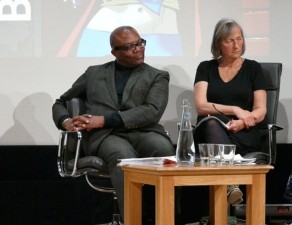
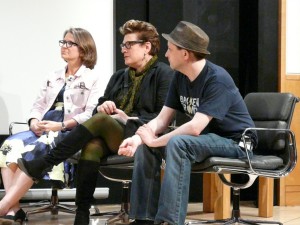
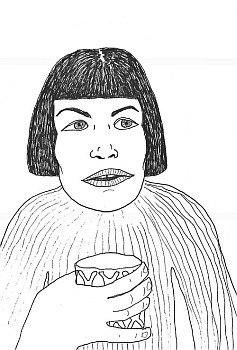
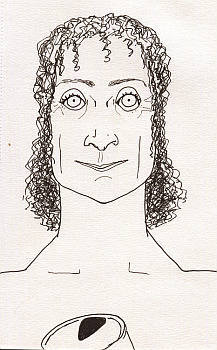
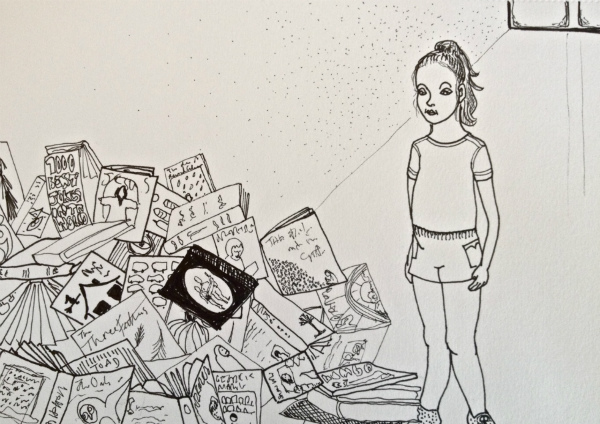
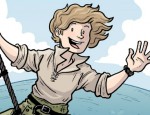

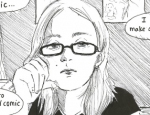
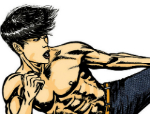
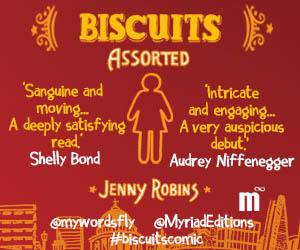





Andy thank you for giving That Wallis Eates a place to tell us all more about her and her work. A real treat for me as a reader and creator to read such an in-depth, honest conversation. Put me down for a pre-order of Mumoirs, Wallis!